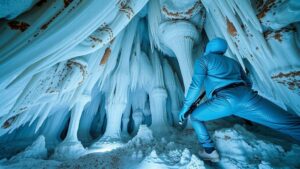Discovering ancient ammonite fossils in the sedimentary cliffs of Switzerland’s Jura Mountains.
Discovering Ancient Ammonite Fossils in Switzerland’s Jura Mountains
The Jura Mountains, a stunning range located on the border between France and Switzerland, are a treasure trove for rockhounds and mineral collectors, especially for those interested in fossil hunting. Among the most sought-after finds in this region are ancient ammonite fossils, remnants of a bygone era that tell a compelling story of Earths prehistoric marine life. Finding these fossils is not only exciting but also enriches our understanding of paleobiology and geology.
Understanding Ammonites: A Brief Overview
Ammonites were marine mollusks that existed from the Devonian period to the Cretaceous period, approximately 400 to 65 million years ago. e cephalopods are closely related to modern squids and octopuses. Ammonite fossils are characterized by their spiral-shaped shells, which can range from a few centimeters to over two feet in diameter. The intricate suture patterns of these fossils offer insights into their classification, as these patterns vary significantly across different species.
The Geological Setting of the Jura Mountains
The Jura Mountains are predominantly composed of limestone and are known for their distinct sedimentary layers. region was formed during the Mesozoic era, making it an essential area for understanding Earth’s geological history. The sedimentary cliffs, primarily consisting of marine deposits, provide an excellent environment for fossil preservation.
- The Jurassic and Cretaceous layers are particularly rich in ammonite fossils.
- Geological formations in this area include the Helvetic Nappe and the Molasse Basin.
Fossil Hunting: Best Practices for Collectors
Finding ammonite fossils in the Jura Mountains can be a rewarding experience for collectors, though it requires patience and an understanding of the best practices. Here are some practical tips:
- Research the Area: Before heading out, it’s crucial to study maps and geological surveys. Online databases and local geological societies can provide insights into the best locations.
- Visit Proven Sites: Sites like the cliffs of Pfrund and the quarries near the town of St. Ursanne are renowned for fossil findings.
- Use the Right Tools: Equip yourself with a hammer, chisel, safety goggles, and a backpack for carrying your finds.
- Respect Land Regulations: Always adhere to local regulations when collecting; obtain necessary permissions, and respect private property.
Preserving Your Finds
Once you’ve successfully collected ammonite fossils, proper preservation is critical to maintaining their integrity. Here are some steps to follow:
- Cleaning: Gently clean the fossils using water and a soft brush to remove loose sediment without damaging the surface.
- Drying: Allow fossils to dry naturally at room temperature to prevent moisture-related deterioration.
- Storage: Store fossils in a climate-controlled environment, preferably in individual boxes or acid-free bags to prevent scratches and damage.
Real-World Applications of Ammonite Fossils
Beyond aesthetic appeal, ammonite fossils have substantial scientific and commercial value. are often used in various applications:
- Educational Purposes: Ammonites serve as an important educational tool in paleontology and geology classrooms.
- Decorative Arts: Polished ammonite fossils are highly sought after in the decorative market, often used in jewelry and home décor.
- Indicator Species: Geologically, ammonites help stratigraphers identify and date sedimentary rock layers.
Conclusion
The Jura Mountains not only offer breathtaking landscapes but also a rich historical narrative through their ancient ammonite fossils. For rockhounds and collectors, this region presents a unique opportunity to engage with the Earth’s geological past. By employing responsible collection practices, you can enrich your fossil collection while contributing to the preservation of our planets history. Prepare for your adventure with knowledge, tools, and respect for the environment, and you may uncover some remarkable specimens in the sedimentary cliffs of Switzerland’s Jura Mountains.



